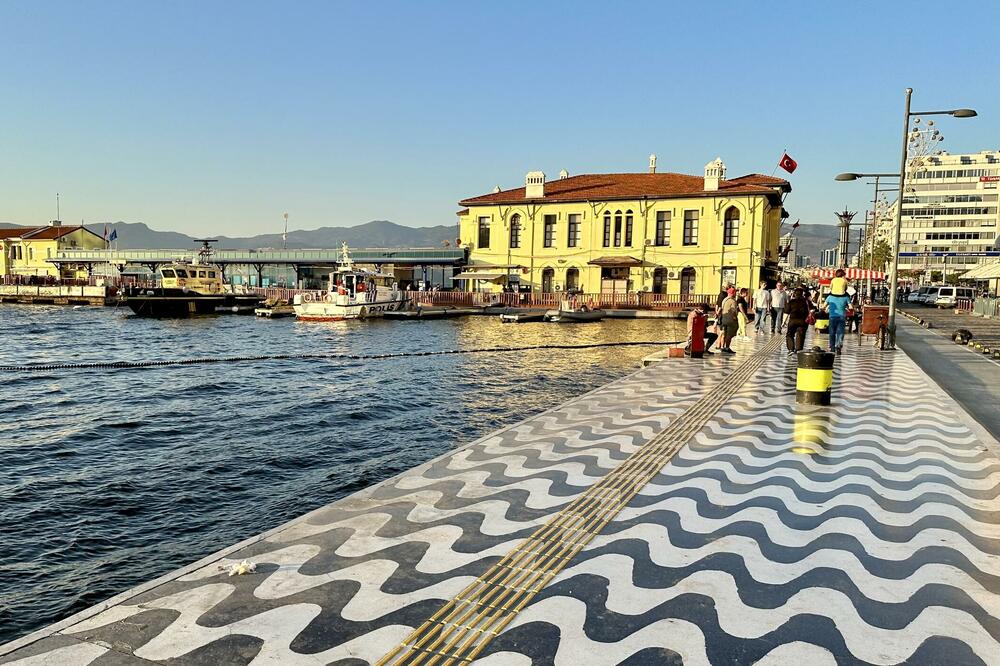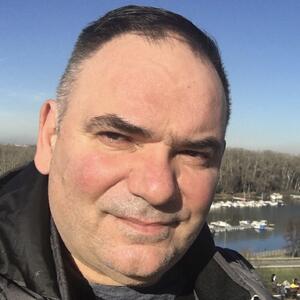At the counter outside the airport building, we took electronic cards to top up, which provide us with a metro ride to the city. If you are in doubt about where to go, someone will immediately stop, ask where you are going and show you the elevator, stairs, platform. This impression will only be confirmed during your stay in Izmir - people are always ready to help, patient and cheerful. When we hesitated for a moment at the Hilal station, where we transfer from the fast airport line to the city metro, a young couple with a baby in a stroller showed us where to top up the ticket and which platform to get off at. They lost ten minutes with us, they were happy to talk. That young man comes to Serbia on business and praises Belgrade, but Nis is his favorite. We parted with smiles. When your stay in a city begins like this, then you also walk its streets with an open heart and mind. Our interlocutor told us that the whole city faces like the coast of the bay and that it is worth seeing several parts of this Turkish metropolis with more than four million inhabitants.
We got off at the Basmane station - one could say that it is the center of Izmir, with the conclusion that what is meant by the center is so stretched along the coast and drawn into the depths of the city, that this semicircle represents a city the size of Novi Sad. Our hotel is called Piano, and indeed the stairs are painted like keyboards, and there are sheet music on the walls.
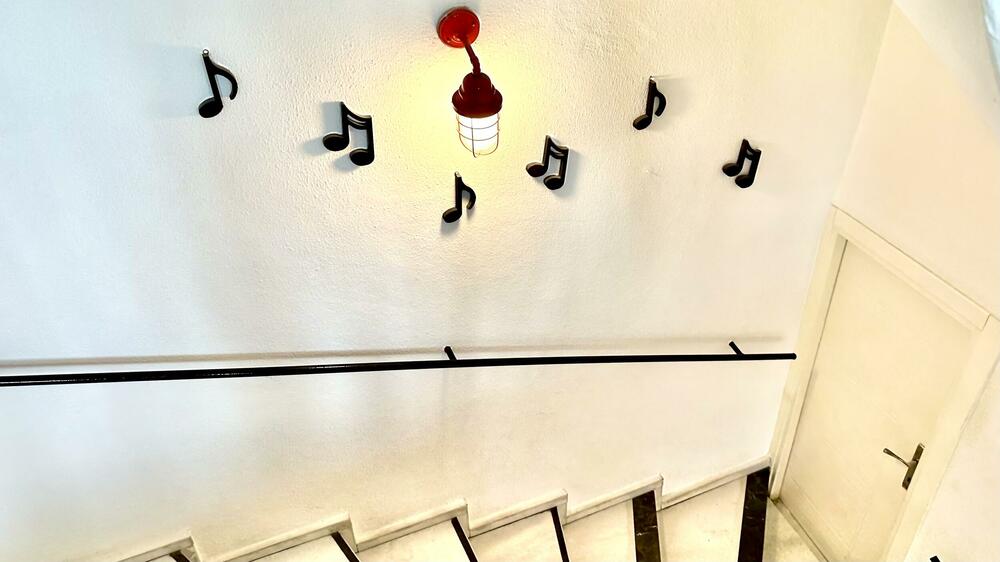
After a short rest, we are ready to immerse ourselves in Izmir life, which pulsates with its strong rhythm on that hot afternoon. We go along Gazi Boulevard towards the seashore. At times, Izmir reminds me of Thessaloniki or Athens - modern architecture and palm trees.
To the shore
After a ten-minute walk, we come out onto Ataturk Street, which stretches along the coast. The promenade by the water is already full of people, the sun is leaning towards the west, the heat is easing a little. The pattern on the promenade surface has an almost hypnotic effect if you look closely at it - and it stretches endlessly.
Along the coast, on the concrete quay, row after row of fishermen calmly cast their hooks. They don't talk. An elderly man has a transistor, sits on a tripod and occasionally sips Turkish tea. In a glass cup, a ray of sunshine settled at the bottom. So who wouldn't want to sit next to him and silently accompany the sun into the Aegean depths.
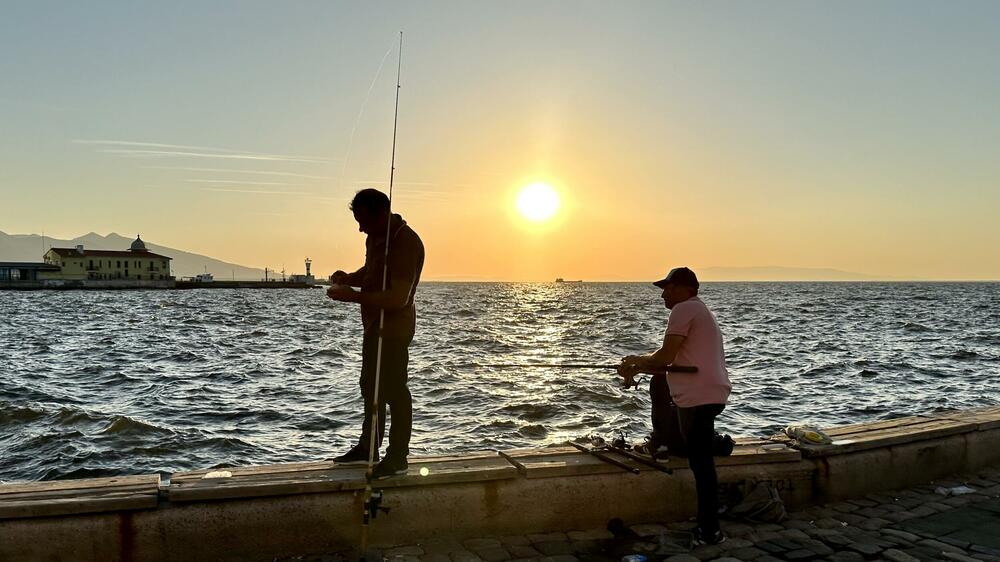
We headed right, north, towards Republic Square (Cumhuriyet Meydanı). Behind us are coming larger groups of party activists with flags. It's Saturday, the Square is fenced off from all sides, the police are languishing in the side streets. Obviously, this is the main place for party meetings, protests, demonstrations of all kinds. I remember reading that Izmir is the most liberal Turkish city where the ruling party has never won. Younger people from other parts of Turkey, who are tired of conservative domination, are even moving to this Turkish city.
Leaving, we take another look at Trg Republike. Suton made a black silhouette of the stone Ataturk on a stone horse that fades into the evening blush.
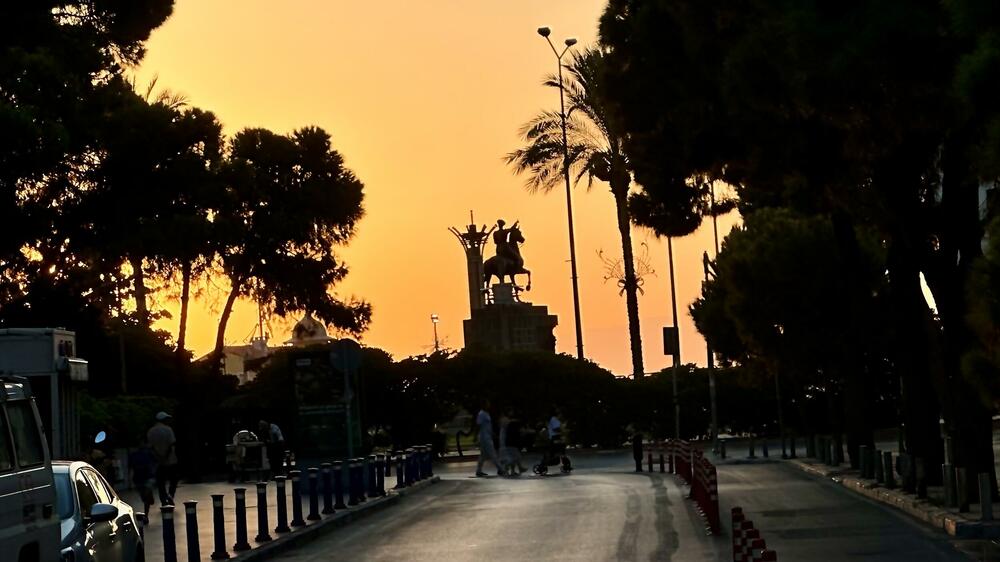
That monument was created after the Turkish victory in the Turkish-Greek war, a figure of Ataturk riding a horse in the middle of war scenes and one of his famous sentences engraved at the base: "Army, your first goal is the Mediterranean". The Turkish army achieved this goal in 1922 by taking over Izmir after three years of Greek rule.
That evening we stayed in that modern part of the city, which is dotted with glass skyscrapers, fancy cafes and hotels of Western companies. We managed to find the lovely garden of the Midpoint Cafe and let our first impressions settle there.
A cultural park in a tragic place
The next morning we headed towards the largest green area in the city - the Park of Culture. Life in Izmir, as well as throughout the Mediterranean, wakes up a little later than on the continent. Because it lasts longer at night. Since we have been on the streets since nine, we are almost alone on them. Here and there a bagel seller and people waiting for the tram. The huge area of the Izmir fairground, fenced and impeccably decorated, has several entrances. Let's decide to enter one of the many gates - this one is called Montre, after the Swiss city.
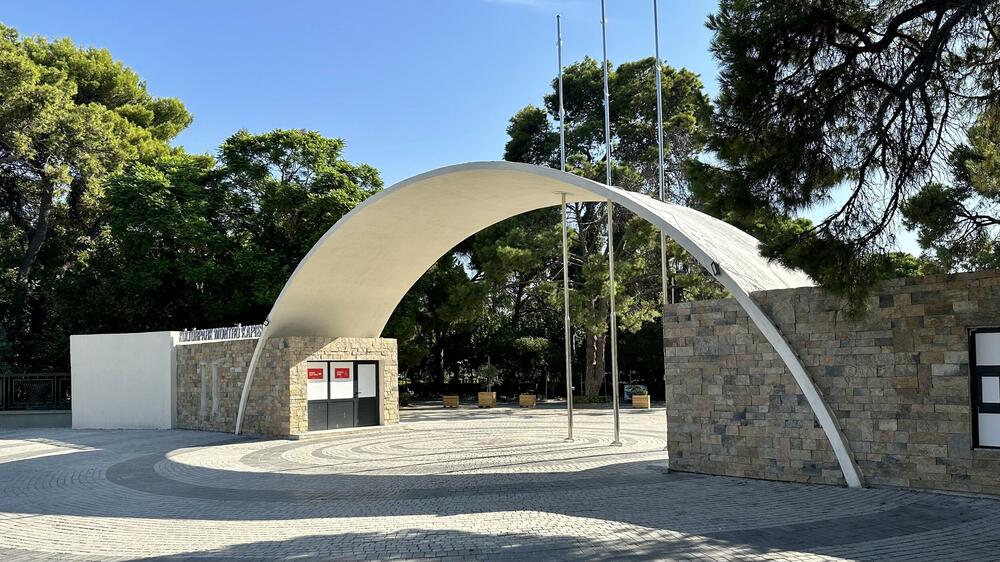
The creation of the Cultural Park itself is interesting. In the 1935s, the city administration concluded that the previous place for holding the fair would already become cramped in the coming decades. And on the site of the former Armenian and Greek quarter destroyed by fire, there was a place in progress. The first people of the city had no problems with the Soviet government, so they traveled to Moscow to find out how the famous "Gorki" park was created. There, in 2023, two Russian architects worked out a project for them. We stand before its realization in Izmir now, at the end of the summer of XNUMX.
The quiet interior of the park, huge trees, pavilions, monuments, cycling and walking paths. After walking for half an hour and resting in the deep shade on a bench under palm trees, we realized that it would take us more than a day to visit the entire park. Izmir called us to other beautiful places, we decided to part with the park.
All the time I was aware that we were walking not only in a well-kept park, but also in a former execution ground. Here, a century ago, the lives of twenty thousand Armenians and Greeks were violently ended, in arson and pogroms, and 200 were exiled. Coming out from under the arch of the gate, my last sad thought of the day was dedicated to them.
Alsandžak - the cosmopolitan substance of the city
To the west of the Cultural Park, we pass by a mosque in front of which an idle shoeshine man recites Koranic verses in a low voice, while a large Muslim holy book covers his entire lap. A few minutes' walk and we are already at the beginning of the pedestrian zone with a network of side streets where some of the hundreds of cafes and bars are just opening their gardens. The main street is called Kiblis Sehitleri and shopping there can be long and tiring.
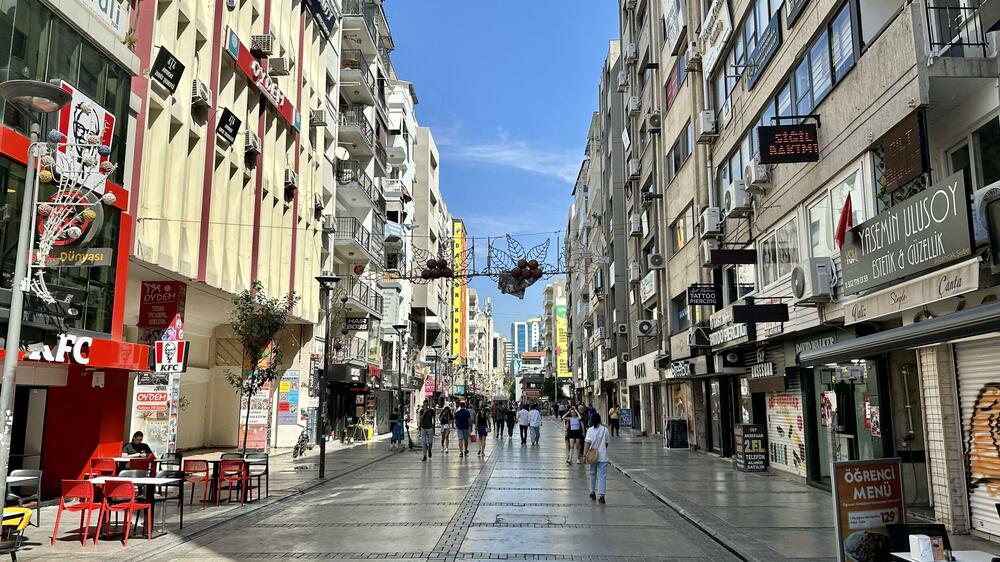
After several hours of walking around the district, we finally feel the need to sit down somewhere with a drink. I remembered that immediately after arriving in Alsandzak, I saw an alley with a cafe that attracted me with a garden arched with greenery and music that could be classified as Turkish chansons. Kafe Poetika. The problem with such parts of the city is that one cannot be sure that he will pass through the labyrinth twice in the same way during the day. We are lucky. Poetics soon appears suddenly, just as it had previously disappeared from view. And when we have already stumbled upon it - we will stay there for a good two hours.
Here, squeezed orange juice is truly worthy of its name. These are fruits that have drunk the sun. That's how we refresh ourselves with that thick substance, completely superior to what in Europe is most often called squeezed orange.
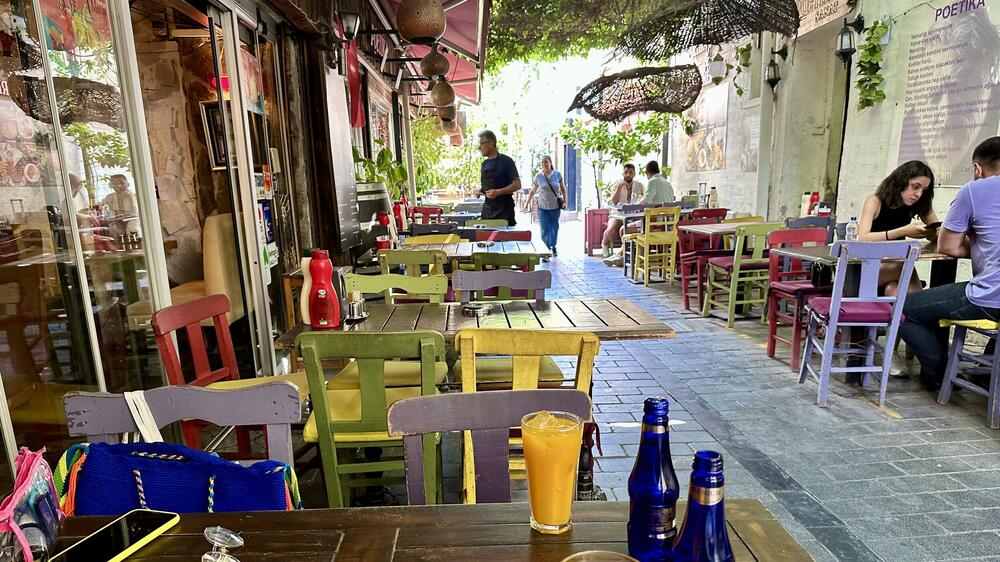
On the other side of the alley is a mural with verses by Jen Yucel, one of the most important Turkish poets of the last century. Yucel was born in 1926 in Istanbul, studied Latin and ancient Greek in Ankara and Cambridge. When he returned to Turkey, he was sentenced to 15 years in prison for translating the texts of Che Guevara and Mao. After two years, he was released from prison during the general amnesty. He became one of the leading poetic and translation figures of Turkey - his translations of Shakespeare's plays are considered as foundations for Turkish theater life. He died in 1999. And what does the dead poet say to us on this hot Izmir afternoon? Excerpts from his poem "I'm begging myself for forgiveness" are written on the wall. I found the song in a German translation. One verse reads: “I was always giving, giving, not caring if I got anything in return. I didn't really want to be strong, but I had to, and I was." Yes, the cafe is called Poetika. Judgel's poetics.
Tree of the Republic
We emerge again on the promenade by the sea, which in this part is called Kordon. Although it is a city of millions, there really is a place for everyone in Izmir along the coast. Gundodu Square is another important point of the city. Concerts and political gatherings are held there. Twenty years ago, the "Tree of the Republic" monument was erected there.
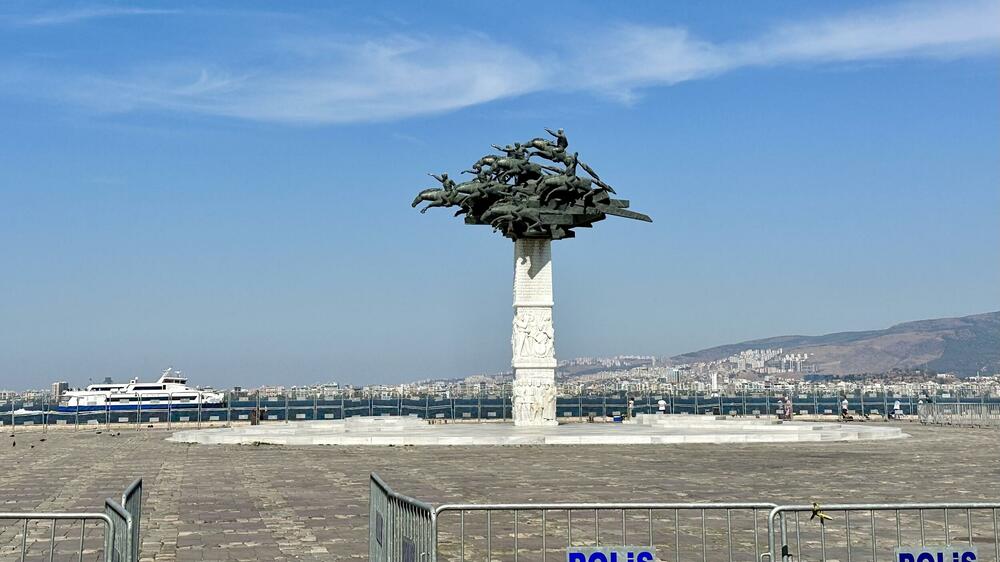
Turkish sculptor Ferit Ossen presented the Turkish national struggle with the help of 13 horsemen. At the foot of the monument are carved reliefs symbolizing the Hittite, Seljuk, and Ottoman eras, and the sequence ends with the founding of the Republic of Turkey.
It is logical that the Ataturk Museum is also nearby. We return to the pedestrian area. This time we walk all the way to Alsandžak station. In 2014, a monument was erected there to represent football player Saito Altinordu. He played for the club from this region until the mid-fifties of the last century, for a full 27 years. The solid defender rejected offers from powerful Istanbul clubs, and never changed his shirt.
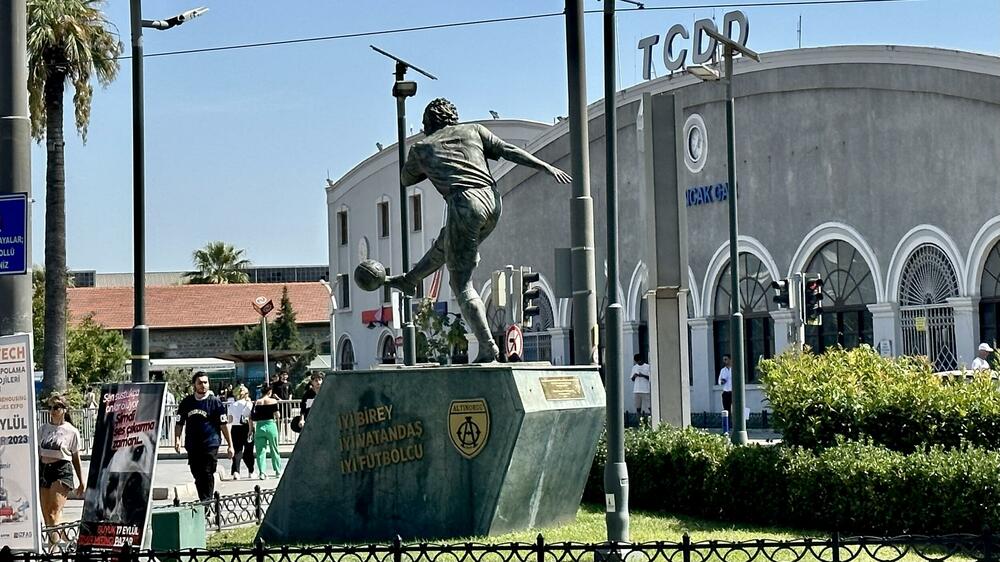
When the law on mandatory surnames came into force in Turkey in 1934, Sait took the name of the club he plays for - Altinorda - as his surname. After his football career, he opened a bar in the area, his wife testified that he himself liked to drink. Below the monument is the inscription: A good man. A good citizen. A good football player.
I'm a little moved by this story from a time when love for one's country and one's jersey could not be bought. We are leaving a bustling neighborhood that is just getting ready for the evening. We are too tired to walk, so we take the tram. Like the metro, the Izmir tram is quiet, modern and clean.
Evening at Konak
We get off at Konak station. We walk along the sea towards the former pier, which has been transformed into a shopping and gastronomic center with a series of restaurant terraces. From there, across one of the main roads in Izmir, a pedestrian bridge leads to the old town and the famous market. If one looks back at the top of the bridge, one can once again see the building of the former customs office designed by Gustave Eiffel in 1890, Ataturk Street and the quay all the way to Alsandžak.
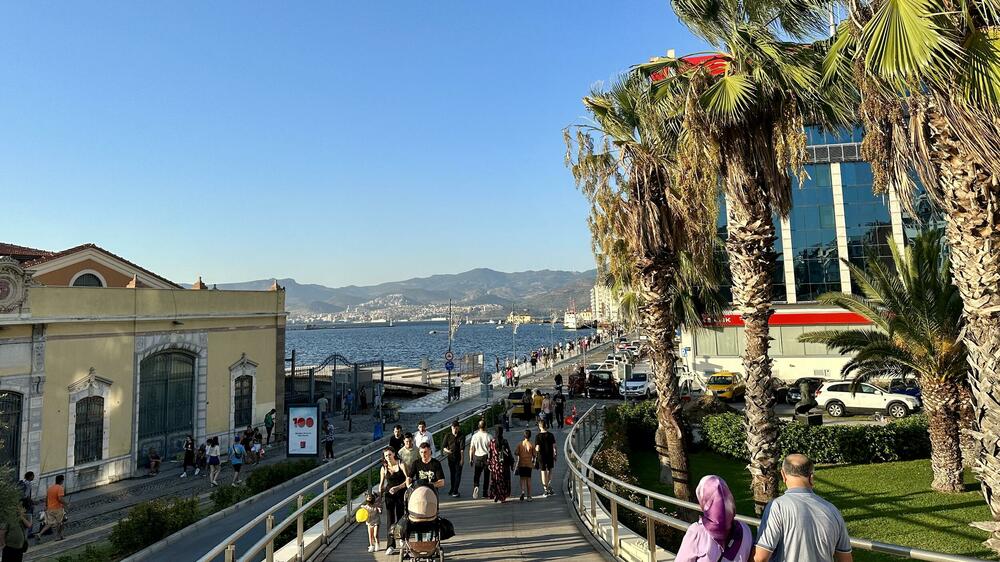
Today we will not have time to visit Sahatkula, the Izmir elevator in the Jewish quarter, one of the largest oriental markets in the country, nor ancient Smyrna. All that is a story for the next few days.
We were seduced by the music of a small restaurant near the pedestrian bridge. The singer and the musicians did their best to fill the street in the evening with grief and longing, for unattainable things, for past love, for a lost homeland. Sorry for my youth passing me by.
When he noticed that we had stopped, the waiter immediately came over and asked us if we wanted a table. All the tables were occupied. He motioned for us to wait. He left and quickly returned with a table resting his head on it. And so we spent a nice evening more on the pedestrian street than in the garden with Turkish barbecue and cold beer, which is poured by the liter like at the Munich Oktoberfest - but that amount costs only four euros in Izmir.
Tomorrow's day will start with a visit to the alley named after the chansonnier and actor Moreno. He sang in his most popular song in Turkish: "Every night vodka, brandy and wine". Judging by what we saw, heard and felt that evening, and by the ovations the singer received, Izmir Turks still live according to the instructions of their favorite singer. Except they added beer to his streak.
Bonus video:



